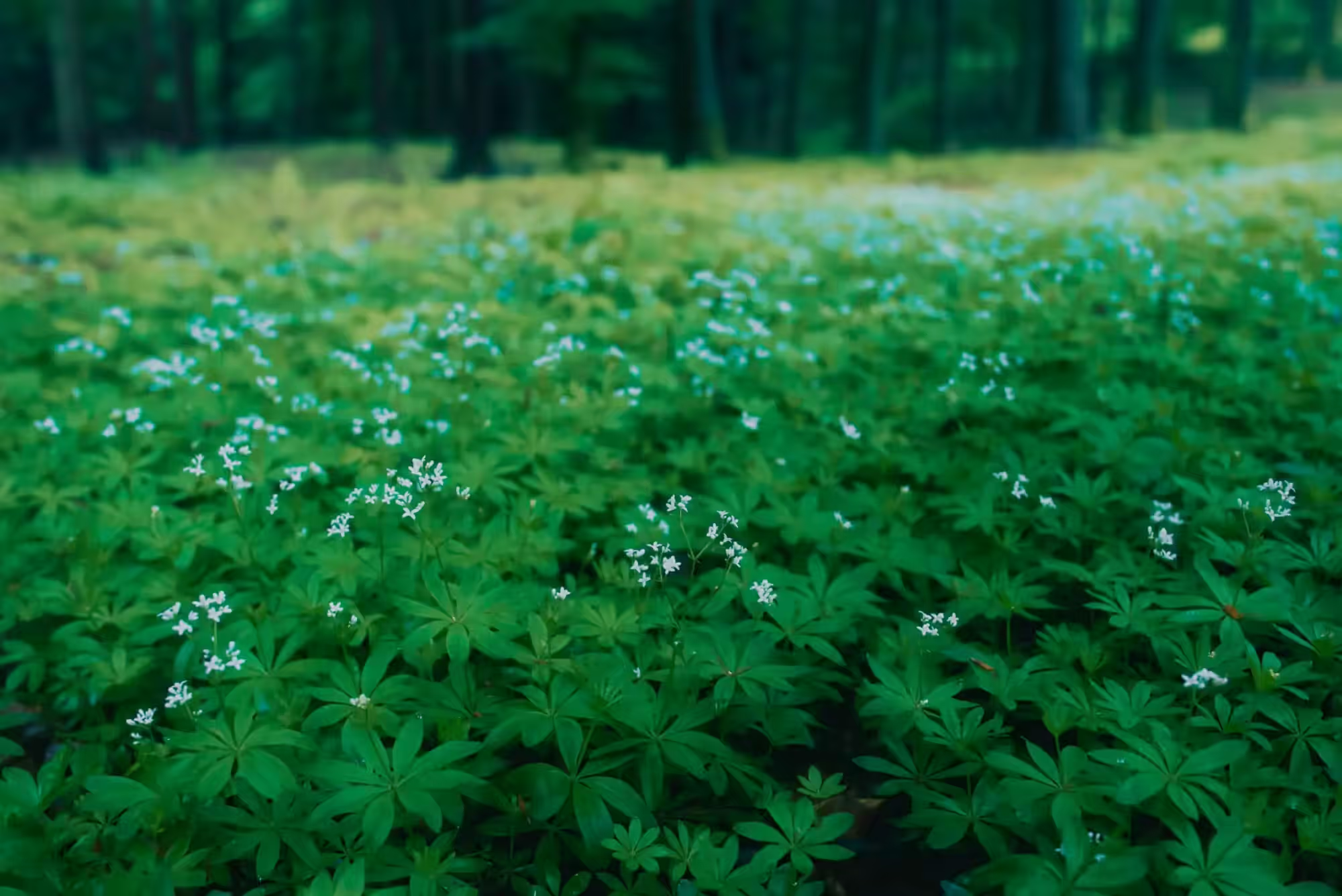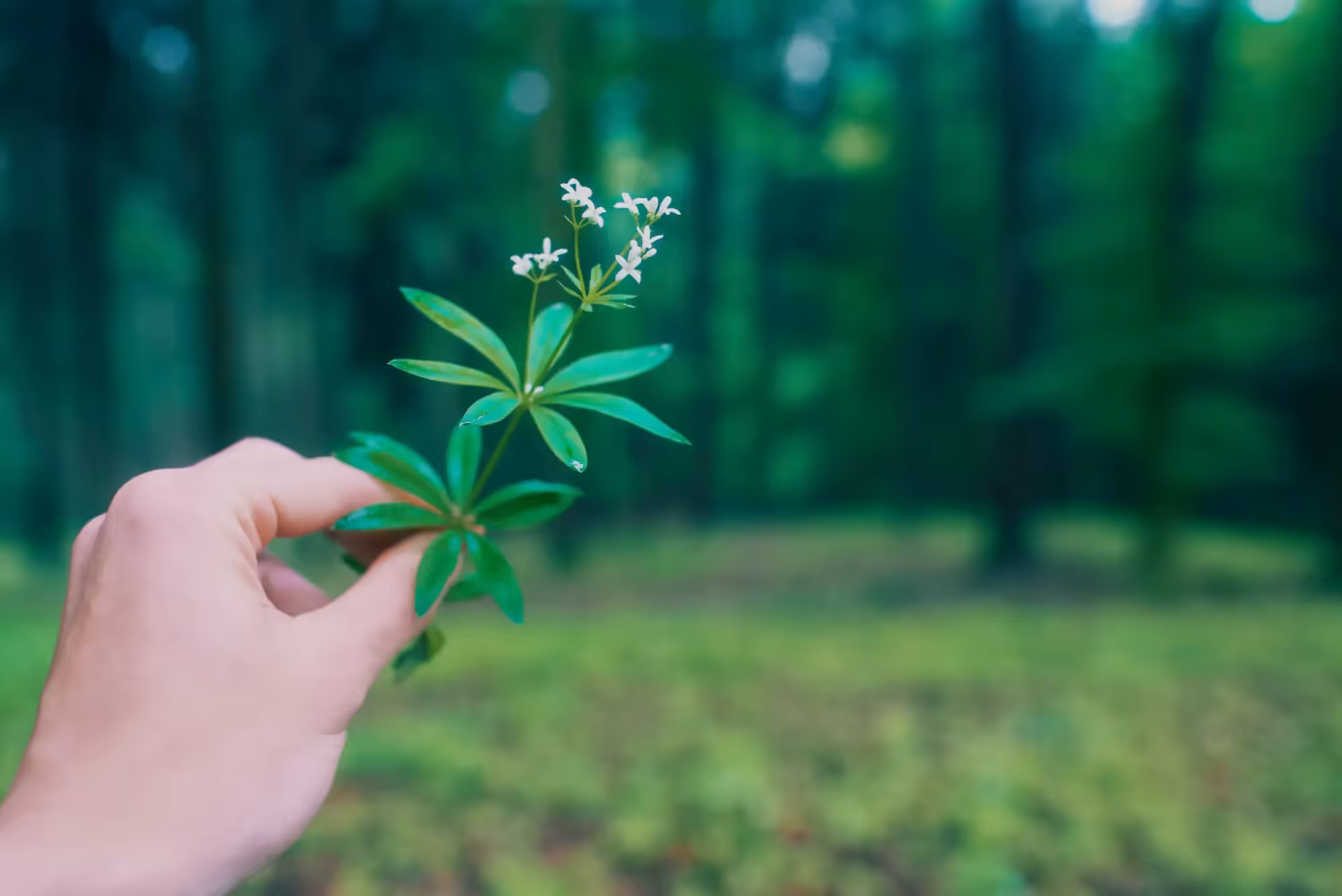Galium odoratum, known by the common names sweet woodruff or sweetscented bedstraw, is a perennial flowering plant belonging to the Rubiaceae family. It is native to a wide range of European regions, spanning from Spain and Ireland to Russia, as well as Western Siberia, Turkey, Iran, the Caucasus, China, and Japan. In addition, it has sporadically naturalized in certain locations in the United States and Canada. Appreciated for both its attractive flowers and fragrant foliage, this plant has gained significant cultivation interest.

Growth Habit and Fragrant Attributes
As a herbaceous species, Galium odoratum typically exhibits a prostrate growth habit, extending up to 30-50 cm (12-20 in) in length. It commonly lies flat on the ground or employs nearby vegetation for support.
The characteristic sweet aroma of Galium odoratum can be attributed to the presence of coumarin, an aromatic compound responsible for its scent. This chemical constituent has led to occasional utilization of the plant as a flavouring agent, contributing to its culinary appeal.

Exploring the Botanical Features and Cultivation
The foliage of Galium odoratum exhibits simple lanceolate leaves, devoid of hairs, measuring 2–5 cm (0.79–1.97 in) in length. These leaves are arranged in whorls of 6–9 along the stem. The diminutive flowers, with a diameter of 4–7 mm, are arranged in cymes. Notably, the fruits, which reach a diameter of 2–4 mm, develop individually and are adorned with minuscule hooked bristles. These bristles serve the purpose of aiding in dispersal by temporarily adhering to clothing and the fur of animals.
Galium odoratum thrives under conditions of partial to full shade, displaying a preference for moist and nutrient-rich soils. During dry summer periods, regular watering becomes necessary to sustain its vitality. This plant can be propagated through various methods, including crown division, separation of rooted stems, or excavation of the shallowly submerged perimeter stolons. It proves particularly advantageous as a ground cover or as an accent in border planting schemes within acidic, wooded gardens where other shade-tolerant species struggle to flourish.
Harvesting Woodruff in the depths of the forest.
Revealing Woodruff's Legacy:
Effects on Body and Mind
In this article, we delve into the utilization of woodruff, shedding light on its profound effects on our physical and mental well-being. Regrettably, the pharmaceutical industry has predominantly depicted this plant as toxic, despite the lack of scientific evidence to substantiate such claims, even at higher dosages. Nevertheless, it is imperative to recognize woodruff as a precious healing plant possessing exceptional properties that warrant appreciation and exploration.
Disclaimer: Woodruff, being a potent plant, demands cautious and regulated utilization. Similar to other herbs, improper dosage can potentially result in undesirable effects. Therefore, it is crucial to exercise care and prudence when employing woodruff or any herb to ensure optimal outcomes.

![Woodruff [Galium Odoratum]](/content/images/size/w300/2023/07/waldmeisterwudroff2.jpg)